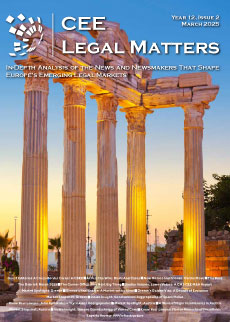While the world continues its endless battle against the COVID-19 consequences that are affecting all aspects of our social, economic, and political life, Serbian legislation is experiencing a revolution in the energy field. In April 2021, the National Assembly of the Republic of Serbia adopted two new laws – the Law on the Use of Renewable Energy Sources and the Law on Energy Efficiency and Rational Use of Energy, as well as amendments to the Energy Law and the Law on Mining and Geological Research.
The most significant novelty is the adoption of the Law on the Use of Renewable Energy Sources, which is an indication of Serbia’s determination to achieve the green energy standards that have already come to life in EU countries. In relation to the Energy Law, which has previously regulated this area very superficially, the Law on the Use of Renewable Energy Sources marks a milestone and navigates Serbia towards the goals it promised to fulfill as a member of the Energy Community and, if implemented as predicted, may certainly advance the country’s EU candidate status. The three main goals set by the Law on the Use of Renewable Energy Sources are (1) a decrease in the utilization of fossil fuels and an increase in the utilization of renewable energy sources in order to protect the environment, (2) the long-term decrease of dependence on energy-generating products, and (3) the creation of new workplaces and development of entrepreneurship in the renewable energy sources sector. It also introduces a new incentive for potential investors in the form of market premiums, which is expected to stimulate investments in renewable energy sources, from both domestic and foreign investors, and thus lead to a continuous increase in the share of renewable energy sources in Serbia’s total gross energy consumption.
In February 2022, the Ministry of Mining and Energy of the Republic of Serbia (Ministry) published a document titled Energy Security of the Republic of Serbia. The document cites short-term and long-term plans and tactics for the improvement of the energy sector, including the establishment of a company called Green Energy of Serbia, as well as achieving decarbonization by the end of 2050. The document criticizes current power engineering, noting that Public Enterprise Elektroprivreda Srbije (PE EPS) has not built a new power plant in the last three decades. Its thermal production blocks are outdated and in bad condition, which often leads to power outages, not to mention that its management is subject to political currents and interests. Still, PE EPS is the most reliable support of Serbia’s energy sector – its thermal power plants produce about 70% of the electricity in Serbia, while about 30% is obtained from hydroelectric power plants. In its document, the Ministry suggests building new, green power plants, installing solar panels in households and industries, and building pumped-storage hydropower plants and energy storage batteries, which would all eventually lead to a shutdown of coal power plants.
The global energy crisis is further fueled by the war in Ukraine. In this sense, it is important to mention that Serbia is almost completely dependent, with 90% of its natural gas being imported from Russia through the Russia-Ukraine-Hungary-Serbia interconnection. In January 2021, Serbia diversified its natural gas supply and is additionally supplied from Bulgaria through the Balkan Stream gas pipeline. The further diversification of routes and suppliers through interconnection with neighboring countries would help Serbia avoid a potential crisis.
Since there is great potential for renewable energy sources in Serbia in water and wind, more than half of a new investment plan drafted by the Ministry (EUR 35 billion) is planned for projects relating to hydropower plants and wind farms. PE EPS currently has 16 hydropower plants with many projects announced, including the construction of two reversible hydropower plants (Djerdap 3 and Bistrica) that could play a big role in the further development of wind parks and solar power plants. The construction of small hydropower plants is mostly obstructed but remains an important issue, much like in neighboring countries.
The energy consumption of Serbia is four times as high as the EU average, caused by a decaying and inefficient energy sector. If the new laws are implemented properly, increased green investments will bring economic development, new jobs, opportunities for new innovations, and an energy-efficient future. The transition to a green economy is also a chance for the recovery of the Serbian economy, and the new laws certainly point out the country’s dedication to achieving these goals.
By Igor Zivkovski, Partner, Zivkovic Samardzic
This Article was originally published in Issue 9.6 of the CEE Legal Matters Magazine. If you would like to receive a hard copy of the magazine, you can subscribe here.

















